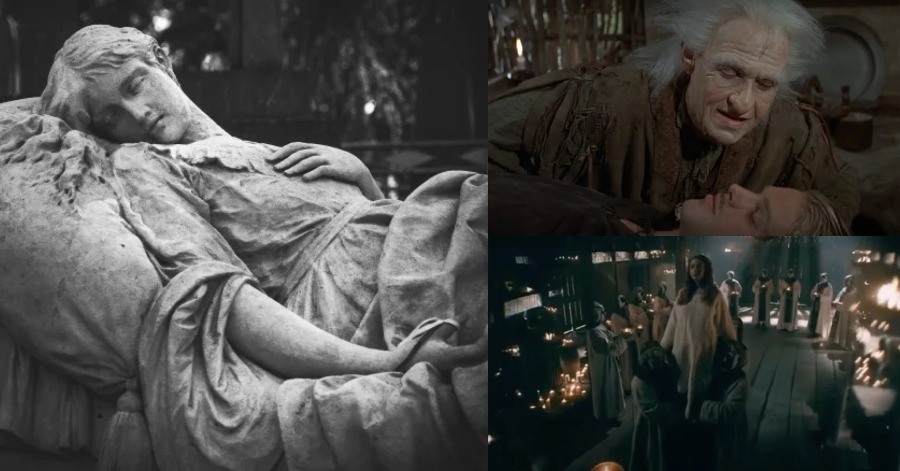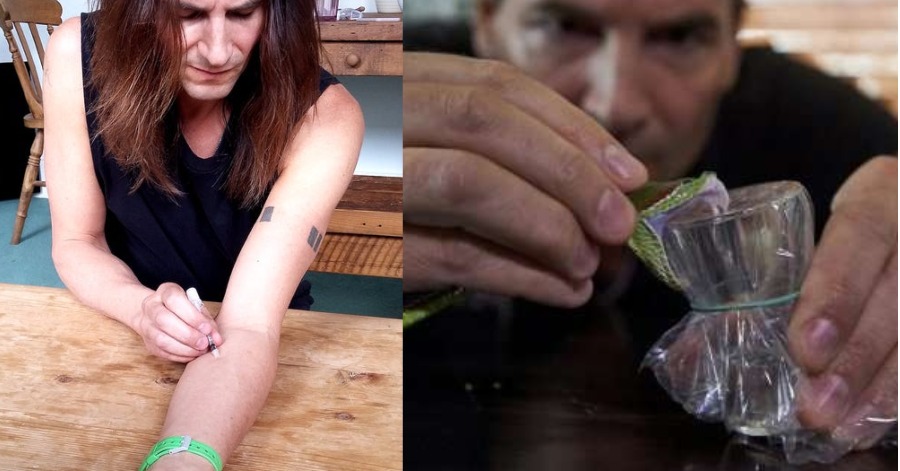Modern people aren’t exactly without our flaws, but for the most part, we’re less willfully creepy than our forbearers. New political ideas and new technologies were transforming the way people lived but casting an ominous tinge over their lives. More than any before it, the 20th century was defined by scientific advancement. Unfortunately, as much as science is a process of often expensive and lethal trial and error, so, too, was much of the 20th century.
A thousand years ago, there were a lot of super creepy things that people did that were considered just another day at the rodent-infested hovel, or the castle, or whatever drafty and unpleasant structure it was you found yourself living and or working in. This was partly due to people’s not very sophisticated understanding of everything and partly due to people just making stuff up because it was the only way they felt like they could control their not-very-controllable existence on planet Earth. Here are the 5 creepiest things people thought were totally normal 1,000 years ago.
1) Shave And A Heart Transplant
If you needed surgery you didn’t go to a physician, you went to a barber. Evidently, people thought that a person who was skilled at cutting hair would also be skilled at cutting human flesh. According to Ancient Origins, physicians were exclusively reserved for the upper-class, which let’s be honest is sort of the way things are headed in the United States these days, but anyway. A proper physician was way, way too educated to touch blood or God forbid the broken limbs of a dirty peasant.
The barber/surgeon, on the other hand, would handle the care of regular people. It was his job to set broken bones, lance infected wounds, treat injuries, and if he was skilled enough, saw people’s limbs off. And give them a nice pompadour while he was at it. The really freaky thing about all of this is that physicians were properly educated and accredited at a university and did practically nothing except advice, while the folks who did the hands-on stuff that could kill you if it went wrong basically learned it all on the job.
2) Corpse Whisperer
Well, 1,000 years ago, people did actually think that corpses could speak, in a sense, anyway. According to National Geographic, the practice was known as “Cruentation,” and it was basically what people did because they didn’t know about DNA and they were otherwise pretty hopeless at things like gathering evidence and interviewing witnesses and caring whether or not they found the actual perpetrator or not. It was more important to execute someone than it was to make sure you were executing the right person.
In those days, people believed that dead people were actually only “mostly dead,” which means that Miracle Max wasn’t really a radical thinker. Early crime investigators thought that if you put a corpse into the presence of its killer, the body would start to bleed. Now, this makes for really dramatic forensics, but the problem was that corpses don’t really bleed much after death, so this technique probably didn’t lead to a guilty verdict very often. But never mind, there was always a lake they could throw the accused into instead since buoyant people are clearly more guilty than the ones who sink.
3) Poop On The Water
According to Slate, there’s not actually much evidence that people did this as it’s not like simply being alive 1,000 years ago made you incapable of understanding that poop is gross and no one wants to step in it, especially if it belongs to someone else. But that doesn’t mean that people who lived 1,000 years ago knew much about the potential of poop to transmit awful diseases, especially if it gets into a major water source, as the Thames for example.
City dwellers who lived in Europe 1,000 years ago did have to get rid of their poop, and like many modern humans, they ascribed to the dubious policy “out of sight, out of mind,” which means they were totally cool with just dumping all of their waste into a nearby river, where it would be washed downstream and become someone else’s problem, at least in theory. Of course, since everyone was doing it, it eventually became everyone’s problem, but it still took a rather disgustingly long time for people to realize that maybe the Thames wasn’t the best place to dump raw sewage.
4) Party At The Graveyard
Actually, kinkiness is as old as time, and for as long as there have been eels to pay the tab there have been ladies of the evening willing to indulge customers’ weird fantasies. And one of those weird fantasies was common enough that it persisted for centuries. According to Ancient Origins, sex workers who hung around in cemeteries usually did a pretty brisk business. Well, in the Middle Ages cemeteries were kind of like party central and townspeople would set up graveyard markets and if you wanted to drink and gamble, you could settle down on your loved one’s grave for a beer and a game of dice and no one would think that was weird at all.
But even before that, from the Roman times onward, prostitutes found they could do dual business in cemeteries: mourners-for-hire by day, and other stuff at night. Their customers were grave-diggers, widowers, and people who had, um, weird graveyard fetishes. And this wasn’t just a passing fad, either, this quirk continued to be a thing for centuries, reaching its peak in 14th century England when the Black Death was killing a lot of people and totally messing with everyone’s boundaries.
5) Institutional Human Sacrifice
1,000 years ago, people in cultures all over the world were still practicing human sacrifice, notably some South American people like the Toltecs, and also the Vikings. According to the Museum of Denmark, the Viking blot sacrifices were a pretty regular thing right up until Christianity started to get a foothold around 1000 AD. Vikings would sacrifice people in exchange for stuff, so if you would have a blot sacrifice if you needed good weather for your crops, or if you wanted to do well in a raid, or if your History Channel series was suffering from declining ratings.
India had its own human sacrifice practice, which was popular from about 550 CE through the 18th century. Called “sati,” it was the expectation that if a widowed woman did not have any surviving children, she should just throw herself onto her husband’s funeral pyre and burn to death, you know, so as not to become a burden to anyone. In the early years of this horrific practice, sati was something a woman did willingly, but at its peak it was a requirement.
Sources: YouTube Grunge.









Leave a Comment